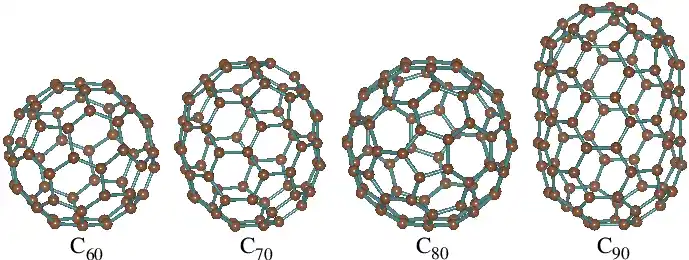افشین رشید
اُستادیار ؛ عضو هیات علمی دانشگاه آزاد اسلامی واحد علوم و تحقیقات تهران
601 یادداشت منتشر شدهInvestigating The Performance of (Buckytubes and Endohystal C۶۰ and C۷۰ Nanofullers) and Diamond in The Manufacture of Nanoelectronic Devices

Note: The first fullerene discovered was the buckyball; most of the properties stated about fullerenes are related to these two types, C70 and C60 .
Fullerenes are nanometer-sized molecules that, in their simplest form, are 60 carbon atoms forming a curved, three-dimensional graphite layer. 60 Unlike diamond and graphite, which have continuous molecules, fullerenes have closed molecules: such as C60, etc. (60 Fullerenes), also called buckyballs and buckytubes, include nanotubes, nanofibers, and fullerenes, which have a structure similar to graphite, but instead of all-hexagonal sections, carbon atoms are also located at the vertices of 5 (or 7) sides.

There are two types of connections in the structure of diamond nanographites :
1_ Covalent bond, the connection that exists between the carbon atoms of each honeycomb layer.
2_ It is the connection that connects the layers of the honeycomb to each other.
Nanographite is very strong in the direction of the honeycomb planes due to its strong covalent bonds; conversely, this structure is much less strong in the direction perpendicular to the honeycomb planes. The structure of nanographite diamond has a network structure. In nanographite, atomic bonds are only formed on the surface, while in the diamond structure, these bonds fill the space in a three-dimensional network. In graphite, a carbon atom forms a covalent bond with three other carbon atoms, while in diamond, a carbon atom forms a covalent bond with four other carbon atoms.

Applications of Nano Diamond in Nanoelectronics Industries
In the nanoelectronics industry; nanochips, increasing the speed of nanotransistors, both types of diamonds, namely n-type and p-type stones, are also used for nanoelectronic applications in microelectronics. By adding a foreign metal impurity “B” to diamonds, P-type nanodiamonds, namely blue diamonds, can be produced, and by adding phosphorus to colorless diamonds, n-type diamonds can also be produced. Today, many semiconductors such as silicon are used in a wide range of nanoelectronic devices. However, nanodiamonds, due to their range of thermal changes and extremely high speed, are only the second best nanosemiconductor in the world, compared to gold nanoparticles.
Conclusion :
Nano graphite and graphene nanoribbons are electrically conductive due to their super-dispersion. Active nano diamond particles, with such properties, especially electronic ones, can be the foundation for completely new types of powerful nanoelectronic devices.